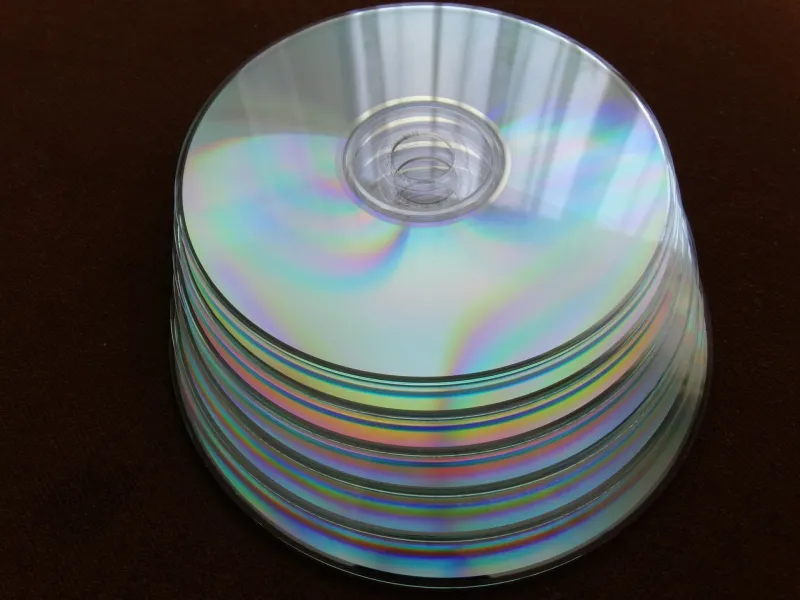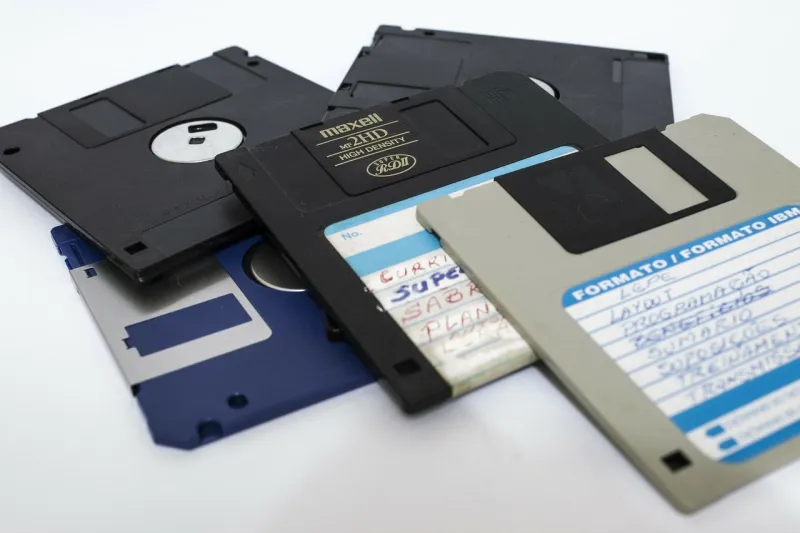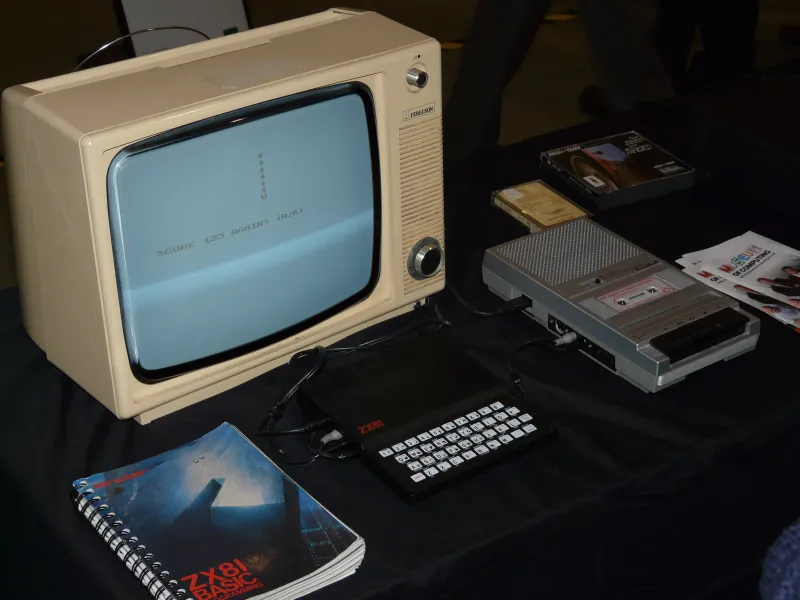Some time ago, I was on a coffee break with the guys from a project when we started talking about "our first programming languages." When I told in which year I started programming in BASIC (and yes, it was not even the Visual BASIC), one of the guys smiled and said: "Oh man, I was two years old at that time."
Well, we all grow older. Or as some prefer, we become more experienced. Better. Like wine.
Inspired by this little episode, I decided to enlist a few milestones that may be unknown to some, slightly familiar to others, or perhaps totally forgotten by those whose memory chips are close to becoming out-of-support.
[ You might also enjoy: Sysadmin careers: Overcoming fear and loathing at the keyboard ]
Check yourself against this list to see how experienced you are.
#1 - You used to "burn" DVDs/CDs

There was a time, not too long ago, when we used to write DVDs (or CDs) as a storage media.
One could put 700 MB on a CD and the whopping amount of 4.7 GB on a DVD.
There was some degree of luck and faith involved in using those for backups, especially if you were brave enough to use rewritable media or cheap media. Writing in one device and reading in another could be tricky too.
Today it is really difficult to find a computer where you can read those disks if you still have any.
Now we have portable HDs and USB thumb drives that are faster, cheaper, and with much more capacity, so it is not as wild as before.
#2 - You know what a floppy disk is

Photo by PublicDomainPictures from Pixabay
Another older storage media that disappeared long ago are floppy disks.
They used to come in different physical sizes (8 inches, 5 1/4 inches, and 3.5 inches) and capacities (80 KB, 360 KB, and 1.44 MB). One of the reasons the 3.5" disks could hold this huge (coughing) amount of data was due to their rigid plastic wrapper (the older, bigger ones were actually floppy).
Believe it or not, we used to install software from these little things and also take backups with them. (Yeah, at some point, it was a pile of them, and the luck and faith factors were also part of the routine).
#3 - You recognize the sound of a modem

Photo by Pete Linforth from Pixabay
Before we had fiber optics delivering ultra-high-speed internet to our homes.
Before we had cable modems.
Before we had wi-fi in every room and every cafeteria.
There were... smoke signals.
Ok, we don't need to go so far searching for primitive methods of communication.
But some people today might think it really strange that in the past we used to connect our telephone lines (which many of us don't even use at home anymore) to a modem, which would convert the digital signals from our computers to some analogic noise, that would be transmitted through the wires and reconverted to digital again on the other side.
Yes, those were strange times. No one else could use that telephone line for a normal conversation during the connections. And we would use it at night anyway because it was expensive to use it for long hours during the day.
And the speeds we would get. Oh my.
My first modem had an astonishing speed of 1200 baud, which in the beginning would grossly correspond to 1.2 kbps. There was always some new technology, compression, better modems but downloading a few megabytes was painfully slow. Again, you had to rely on a good line, good weather, and no disconnections if you wanted to finish a download.
But that was good to forge character, you know? We who survived that time have learned to be a little patient. Or maybe not.
#4 - You witnessed the arrival of the "new Personal Computers"

"IBM PC 1981" by medienzeitmaschine is licensed under CC BY 2.0
It is debatable if Bill Gates really declared that "640K ought to be enough for anyone." But at that time, this phrase didn't sound that absurd.
We could load a live operating system from two floppy disks, and only later people started having the luxury of a hard drive—which was big, noisy, expensive and could hold a whopping 5 MB (Yes, megabytes). Compare that with the terabytes we have on the HDs today.
But hey, at least you finally had your personal computer.
#5 - You programmed in BASIC on your hobby computer

"Sinclair ZX81" by Mike Cattell is licensed under CC BY 2.0
Before companies started using commercially available personal computers, hobbyists would buy some computers based on the ZX8x or similar devices.
You would connect it to your TV, use a cassette tape as a storage device and use a keyboard that was not exactly "ergonomic."
Believe it or not, some people would learn to program (mostly in BASIC) with it.
And as you can guess, loading the programs from the cassette tape could be very tricky: The volume/tone settings would interfere in the process, the recorder head would become dirty, the tape would jam.
But it was actually fun and rewarding. I created a prototype of a musical synthesizer and sequencer using a slightly more modern version of one of these.
Good times.
#6 - You know what a punched card is

"File:Punched card program deck" by ArnoldReinhold is licensed under CC BY-SA 3.0
Before personal computers were common, companies used big computers (the mainframes).
To be able to create programs in it, people would use punched cards that could hold 80 columns of data.
So if someone had to program in COBOL, for example, they would need to punch a deck of cards like these, keep them in order and feed them to a reader.
I was lucky enough to have mainframe terminals to use and did not have to deal with punched cards. But I know that it could be nasty if someone let them fall and get mixed.
Also, sometimes people would need to request a slot of time to use the mainframe because the resources had to be shared. Not "personal" at all.
[ Free online course: Red Hat Enterprise Linux technical overview. ]
#7 - Your first video game was an Atari

Photo from Pixabay
It may seem awkward for the young generations that people could really have fun playing video-games with such low-resolution images (sometimes a ball would look more like a square), and the controllers had just one button, but I can assure you, it was a lot of fun.
We would spend whole nights playing, and in many cases, video games were why some of us wanted to become programmers. That is why the topic "video-game" was included in this list.
Wrapping up
Some of us have seen amazing changes and evolution in the IT world.
Many technologies that were disruptive at their time may today look almost primitive. But they were all solving problems, helping us move forward and get to the point we are today. We have also witnessed that all previously known limits were surpassed (just think about data volumes, speed of processing and communication, graphical resolution, application types).
So far, we have also followed the evolution (fortunately), including the facts that open source and the "clouds" became so prevalent. After all, we still use keyboards and pointing devices to communicate with our computers (voice recognition is still not precise enough for functions like programming, drawing, writing blogs, etc.).
It's been a fascinating journey and I wish to keep participating in this constant evolution. It might also be funny if I can re-read this article 30 years from now to see how things changed.
About the author
Roberto Nozaki (RHCSA/RHCE/RHCA) is an Automation Principal Consultant at Red Hat Canada where he specializes in IT automation with Ansible. He has experience in the financial, retail, and telecommunications sectors, having performed different roles in his career, from programming in mainframe environments to delivering IBM/Tivoli and Netcool products as a pre-sales and post-sales consultant.
Roberto has been a computer and software programming enthusiast for over 35 years. He is currently interested in hacking what he considers to be the ultimate hardware and software: our bodies and our minds.
Roberto lives in Toronto, and when he is not studying and working with Linux and Ansible, he likes to meditate, play the electric guitar, and research neuroscience, altered states of consciousness, biohacking, and spirituality.
More like this
14 software architecture design patterns to know
Getting started with socat, a multipurpose relay tool for Linux
Days of Future Open | Command Line Heroes
Are Big Mistakes That Big Of A Deal? | Compiler
Browse by channel
Automation
The latest on IT automation for tech, teams, and environments
Artificial intelligence
Updates on the platforms that free customers to run AI workloads anywhere
Open hybrid cloud
Explore how we build a more flexible future with hybrid cloud
Security
The latest on how we reduce risks across environments and technologies
Edge computing
Updates on the platforms that simplify operations at the edge
Infrastructure
The latest on the world’s leading enterprise Linux platform
Applications
Inside our solutions to the toughest application challenges
Virtualization
The future of enterprise virtualization for your workloads on-premise or across clouds
